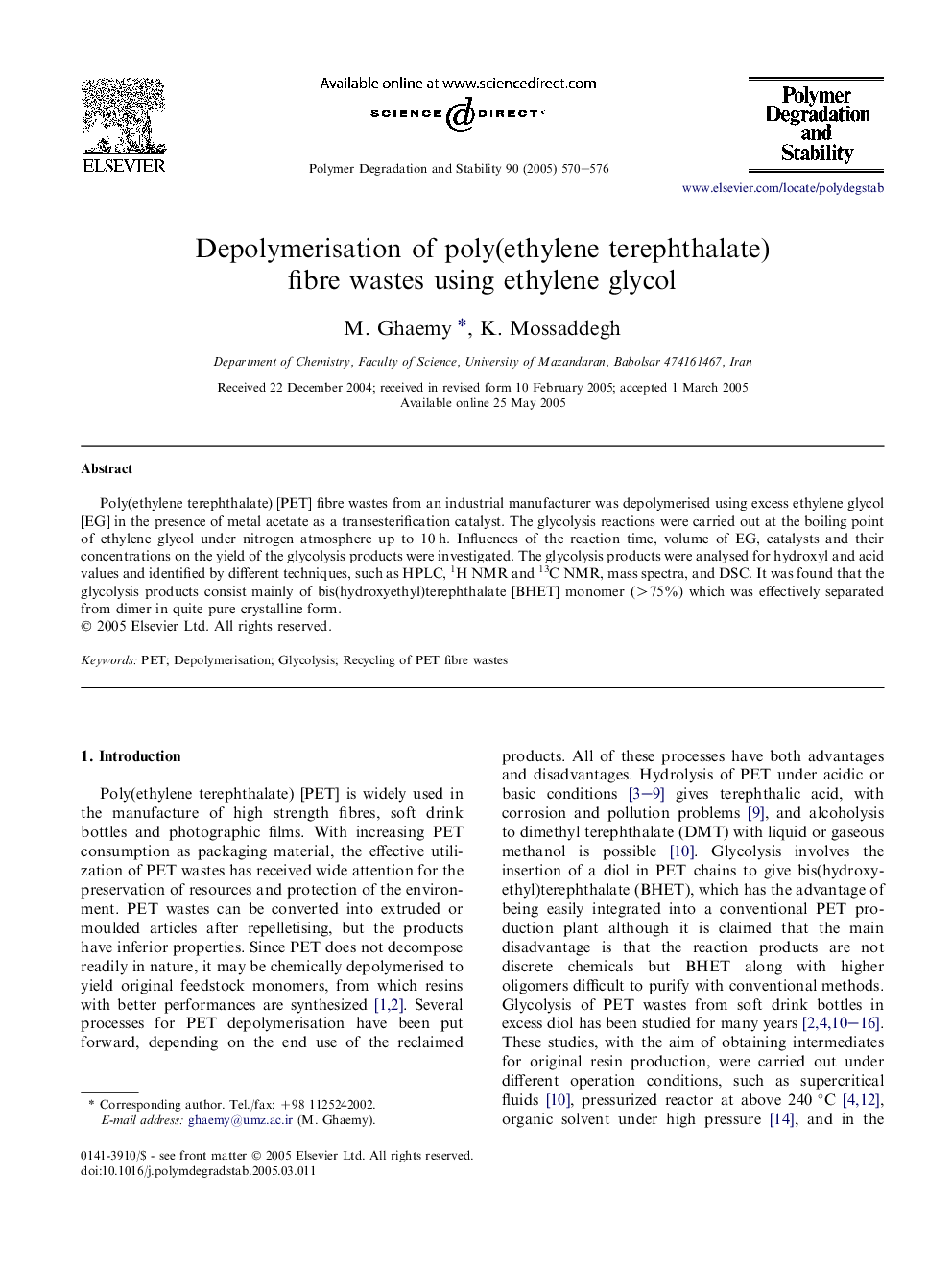| Article ID | Journal | Published Year | Pages | File Type |
|---|---|---|---|---|
| 9560631 | Polymer Degradation and Stability | 2005 | 7 Pages |
Abstract
Poly(ethylene terephthalate) [PET] fibre wastes from an industrial manufacturer was depolymerised using excess ethylene glycol [EG] in the presence of metal acetate as a transesterification catalyst. The glycolysis reactions were carried out at the boiling point of ethylene glycol under nitrogen atmosphere up to 10Â h. Influences of the reaction time, volume of EG, catalysts and their concentrations on the yield of the glycolysis products were investigated. The glycolysis products were analysed for hydroxyl and acid values and identified by different techniques, such as HPLC, 1H NMR and 13C NMR, mass spectra, and DSC. It was found that the glycolysis products consist mainly of bis(hydroxyethyl)terephthalate [BHET] monomer (>75%) which was effectively separated from dimer in quite pure crystalline form.
Keywords
Related Topics
Physical Sciences and Engineering
Chemistry
Organic Chemistry
Authors
M. Ghaemy, K. Mossaddegh,
